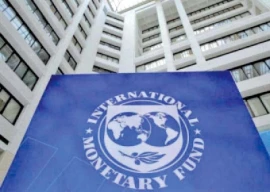
Oil prices fell for a fifth day in a row on Thursday and by the most since 2020 on growing worries about rising Covid-19 cases in Europe and the strengthening US dollar.
Brent futures slid $4.17, or 6.1%, to $63.83 a barrel by 1808 GMT, while the US West Texas Intermediate (WTI) crude dropped $4.13, or 6.4%, to $60.47.
That has put Brent on track for its biggest daily percentage decline since June 2020 and WTI for its largest since September 2020. Both benchmarks are set for their lowest close since March 2.
Both contracts have been declining for five straight sessions, the longest losing streak for WTI since February 2020 and for Brent since September 2020.
“Crude prices are declining for a fifth consecutive day as concerns grow that Europe won’t have a regular summer,” said Edward Moya, senior market analyst at Oanda in New York.
“Europe is seeing a third straight week of rising Covid-19 cases and with vaccination hurdles remaining in place.”
A slowdown in vaccination programmes in Europe and the prospect of more restrictions to control the coronavirus have tempered expectations for a recovery in fuel use.
Britain will have to slow its Covid-19 vaccine rollout next month due to a supply crunch caused by delays in shipments of millions of AstraZeneca shots from India, and the need to test the stability of an additional 1.7 million doses.
A number of European countries have halted the use of AstraZeneca shot because of concerns about possible side effects, though the World Health Organisation said Europe should continue to use the vaccine.
US crude inventories rose for the fourth straight week after severe cold weather in Texas and the central part of the country in February forced shutdowns at refineries.
Traders said stockpiles could grow further after WTI on March 12 switched from backwardation to contango, where front-month contracts are cheaper than the second month.
“Contango is bearish because it encourages (firms to) store crude oil and sell it further down the curve at a profit,” said Bob Yawger, Director of Energy Futures at Mizuho in New York.
The premium of the Brent front-month over its second month meanwhile was the lowest since early February.
A rise in the value of the dollar after the US Federal Reserve meeting has also contributed to the oil sell-off. A stronger dollar makes oil more expensive for holders of other currencies.
“Yesterday’s (Wednesday’s) US Federal Reserve meeting provided a boost to equities ... US economic growth has been revised upwards while unemployment is expected to decline,” said PVM Oil Associates analyst Tamas Varga.
In Saudi Arabia, crude oil exports rose in January to the highest since April 2020, according to the Joint Organisations Data Initiative (JODI) website on Thursday.

















COMMENTS
Comments are moderated and generally will be posted if they are on-topic and not abusive.
For more information, please see our Comments FAQ